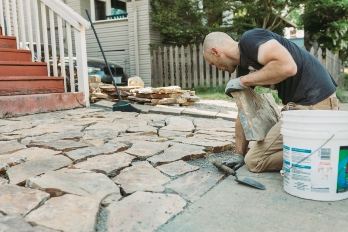This is part of our ongoing series on the basics of owning a home.
Not sure what that list of costs in your mortgage statement are? Shopping for a home and wondering if you’ll be able to understand your mortgage statement when you receive one?
We’re here to help!
Your mortgage statement is composed of your PITI (pronounced like “pity”), which stands for principal, interest, taxes and insurance.
In short: The principal and interest go to your loan servicer, the company that owns and manages your loan. Your taxes and insurance, meanwhile, are deposited into an escrow account to be paid on your behalf when they’re due.
Principal
The “P,” or principal portion, is the amount you borrowed from your lender. So if your home price is $300,000 and you make a 20% down payment (or $60,000), your principal amount is $240,000.
How much of your monthly payment goes toward reducing principal (and increasing your equity!) depends on your loan terms.
You should receive an amortization schedule at your loan closing that shows every mortgage payment you’ll make over the life of the loan, broken down into principal and interest. If you didn’t get your amortization schedule at the closing, ask your loan servicer send you one or use an online amortization calculator.
Interest
The first “I” in PITI represents the interest portion of a mortgage payment. “Interest” is the fee paid to borrow money. A greater portion of each payment goes toward paying off interest in the early years of a mortgage, though that amount decreases as the loan progresses.
Taxes
Though your property taxes (the “T” in PITI) are typically billed annually, your mortgage servicer divides that amount into 12 monthly installments to collect as part of your monthly mortgage payment. Servicers normally set this portion of a payment aside in an escrow account and withdraw the funds to pay taxes when they’re due.
Hold up: We explain what escrow is and how it works.
Insurance
The final “I” of PITI is for your homeowners insurance.
Homeowners insurance protects your home and property in the event of damage or theft. Depending on the property and location, you may need to purchase additional protection, such as earthquake or flood coverage. Your lender will tell you the minimum coverage they require, but you may want to consider more depending on your circumstances.
Psst – what is flood insurance? We break it down!
If you paid less than 20% of your home’s purchase price as a down payment, your mortgage lender will likely require you to take out private mortgage insurance (PMI). This insurance protects the lender if you default on your mortgage payments. Once you build at least 20% equity in your home — and your loan-to-value (LTV) ratio is 80% or less — you can get rid of PMI, and your lender is required to cancel it once you get to 22% equity.
If you’re using an FHA loan for your home purchase, you’ll have FHA mortgage insurance premiums. These are normally paid for the life of the loan, unless you pay at least 10% of the home’s purchase price as a down payment. If that’s the case, you can expect to cancel the insurance after 11 years.
As with property taxes, your annual home and mortgage insurance premiums are divided by 12, added to your monthly payments, and held in escrow until they’re due.
Pro tip: You may want to watch your monthly mortgage statements to make sure your taxes and insurance are being paid.
Now that you know what to look for in your mortgage statement, it should be easier to understand. For more tips to tackle your mortgage, head to:
- What to do about your mortgage in a financial crisis.
- What is mortgage insurance — and do you need it?




